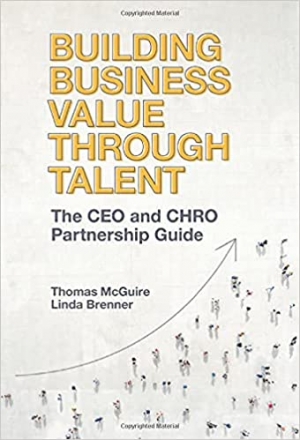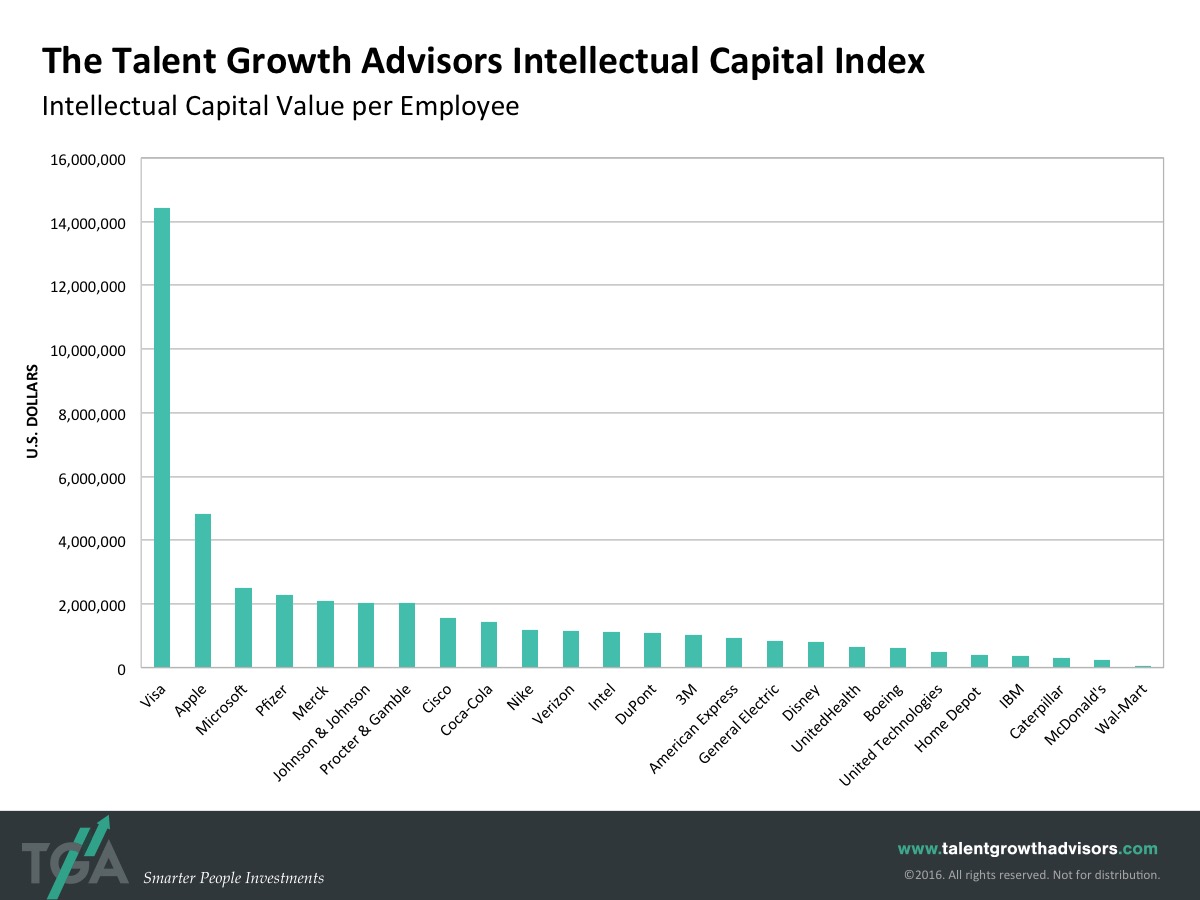Proving the value of HR Investments. Finally.
Clarify, value, and prioritize your HR projects
CHROs need to be able to directly connect talent initiatives and outcomes to business value so they can gauge ROI and better prioritize HR efforts. This ensures more value-added contribution and credibility throughout the organization. Our proprietary framework brings this discipline to every project to help leaders clarify, value, and prioritize HR projects by linking them directly to business results.
Our Proprietary Algorithm
By blending deep expertise in finance and talent, decades of practitioner experience inside Fortune 100 firms, and an obsession with using data to make decisions, we embarked on a data-based analysis (The Intellectual Capital Index) that used financial statements and economics to evaluate the return on talent investment and calculate the value of intellectual capital produced in businesses.
Our book, Talent Valuation: Accelerate Market Capitalization through Your Most Important Asset, is the culmination of that work. It proves the ability to measure the market value of intellectual capital and the importance of using it to prioritize talent-related efforts. This lays the foundation for the approach we now bring to every engagement, and it provides a means for consistently making smarter people investments, measuring critical outcomes, and driving continuous, data-based improvements.
For too long, proving the value of HR investments has been an elusive goal. Meaningful connections between talent initiatives and business outcomes have centered around soft measures of questionable relevance outside of HR teams. Our approach breaks this cycle and unleashes truly strategic and business relevant talent investments.
View The Intellectual Capital Index
FAQs
What does “Talent Valuation” mean?
What is intellectual capital and why is it so important?
What is the TGA Intellectual Capital Index (ICI)?
Which companies have the most intellectual capital?
How can a company increase its intellectual capital?
What’s the best way for HR leaders to prioritize talent-related investments?
We don’t have a talent strategy or workforce plan. Where do we begin?
Since the 1980s, whether in Finance, Marketing, or HR roles, Tom has always thought way beyond the curve—and delivered results. He collects and connects dots from all his experiences habitually. In this pioneering exposition on the value of talent, he connects them all.
Cynthia McCague
Tom draws on his unique background spanning senior roles in operations, finance, and human resources to deliver a thoughtful and comprehensive solution to talent valuation. It stands alone in this space, because he truly understands key value drivers.
Jack Stahl

Building Business Value through Talent: The CEO and CHRO Partnership Guide
Building Business Value through Talent uniquely describes how a CEO and CHRO can accelerate business growth by working together to design and operationalize value-driven talent strategies.
CEOs focus on decisions that will drive the business strategy forward while HR leaders routinely try to satisfy the needs of the largest number of employees. Often, the two align superficially or in administrative ways - and to put out the occasional flash fire. This book changes that dynamic by unlocking the investment potential of HR and empowering an unprecedented, tangible and measurable partnership between CEOs and CHROs. Framed as a product guide, the product is visualized as the HR Operating Model necessary to succeed in our modern economy: a business-based talent planning and investment strategy to sustain talent solutions and intellectual capital growth.
This product guide provides the tools and insights that business leaders are seeking in order to win the ever more challenging battles in their war for talent. Learning and adopting these winning practices will provide a visible testament to the effective leadership of any CEO and CHRO team.

Talent Valuation: Accelerate Market Capitalization through Your Most Important Asset
It’s time to stop treating “human capital” as a buzzword and start managing it with the same level of rigor and diligence as tangible capital. This can be done. It must be done. Talent Valuation will show you how.
-
What your company and The Beatles have in common
Is every role critical? Consider Paul McCartney vs. the guitar tuner -
Link human capital investments to your critical success factors
Target roles and talent that create the most intellectual capital -
Bring rigor to talent strategy, workforce planning, and talent management tactics
Answer the right questions to optimize the value of talent attraction and management -
Target your employment branding to your most business-critical talent
Master the laser-beam approach to attracting and retaining the people you need most
